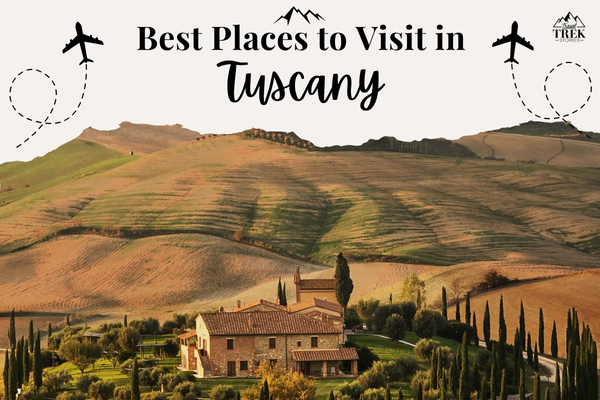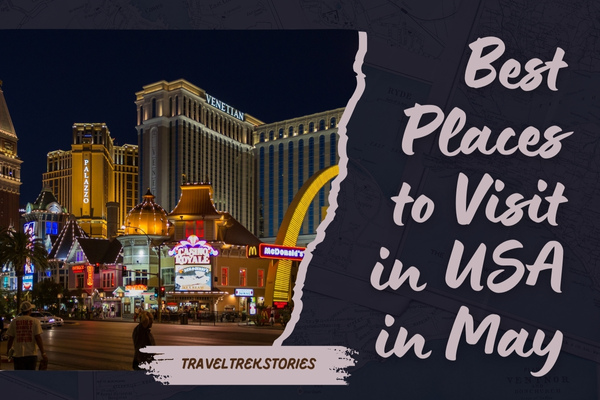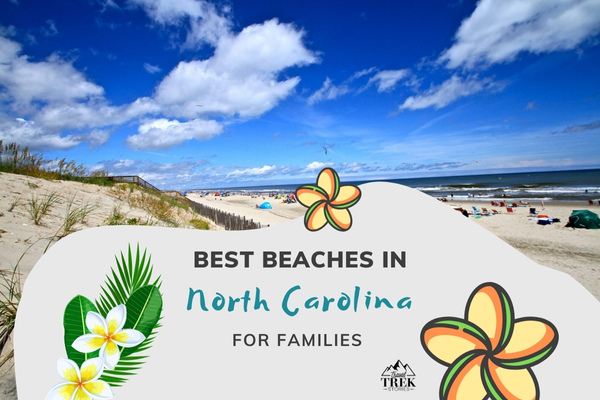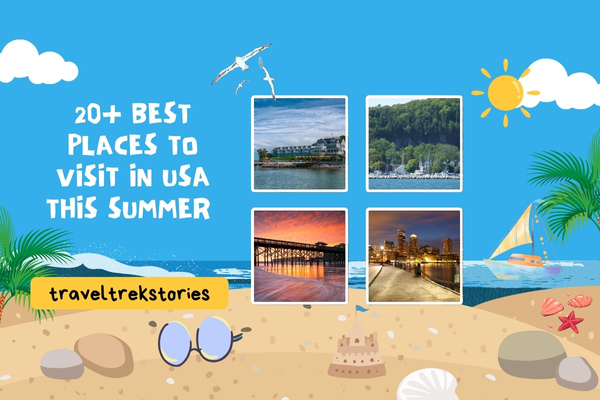Tuscany wasn’t just a trip—it was a dream that unfolded slowly, like a sunrise over rolling vineyards. The moment I stepped into this golden-hued region of Italy, I felt like I had walked into a painting. The kind where every frame is lined with cypress trees, terracotta rooftops, and hilltop towns that whisper stories of centuries past.
I didn’t rush through it. I wandered through quiet medieval lanes, tasted wines in rustic cellars, and found moments of peace under olive trees. Each stop had its own charm—whether it was the bustling streets of Florence or the silent majesty of the Val d’Orcia. That’s why I put together this list of the best places to visit in Tuscany—because this region isn’t meant to be checked off, it’s meant to be savored. These are the spots that made me fall in love with Tuscany—and I think they’ll do the same for you.
| Place Name | Location | Perfect For | What I Loved | Vibe | Must-Do |
|---|---|---|---|---|---|
| Florence | Central Tuscany | Art, history, shopping | The Uffizi Gallery and sunset views from Piazzale Michelangelo | Classic, cultural, busy | Climb the Duomo and stroll the Ponte Vecchio |
| Siena | South of Florence | Medieval charm, local festivals | The fan-shaped Piazza del Campo—so unique! | Romantic, historic, slower pace | Visit during Palio di Siena horse race |
| San Gimignano | Northwest of Siena | Hilltop views, medieval towers | Walking through the town’s 13 towers felt like time travel | Scenic, dramatic, touristy | Eat world-champion gelato at Gelateria Dondoli |
| Val d’Orcia | Southern Tuscany | Photography, wine, countryside | Every single road is postcard-worthy | Tranquil, cinematic, dreamy | Drive through Pienza, Montalcino, and Montepulciano |
| Lucca | Northwest Tuscany | Bike rides, peaceful walks | Biking on the Renaissance-era city walls | Charming, leafy, relaxed | Climb Guinigi Tower for rooftop gardens |
| Pisa | West Tuscany | Iconic landmarks, quick day trip | Seeing the Leaning Tower in person was surreal | Lively, compact, touristy | Climb the Leaning Tower early to beat the crowd |
| Montepulciano | Val d’Orcia | Wine lovers, views | The Vino Nobile and views over the rolling hills | Rustic, romantic, delicious | Wine tasting in old cellars beneath the town |
| Volterra | Western Tuscany | Archaeology, peaceful escape | The Etruscan ruins and less touristy streets | Quiet, cultural, underrated | Visit the Roman theater and alabaster workshops |
| Cortona | Southeast Tuscany | Under-the-radar charm | Views that inspired “Under the Tuscan Sun” | Authentic, warm, local | Hike to the fortress above the town |
| Pienza | Val d’Orcia | Cheese lovers, romance | The smell of pecorino in the streets! | Sweet, tiny, picturesque | Try pecorino at a family-run shop |
| Chianti Region | Between Florence & Siena | Wine, vineyards, road trips | Every vineyard welcomed me like family | Rustic, scenic, indulgent | Wine tour through Greve and Radda |
| Arezzo | Eastern Tuscany | Less touristy, art lovers | The frescoes by Piero della Francesca | Historic, artsy, peaceful | Shop at the monthly antiques fair |
| Montalcino | Val d’Orcia | Brunello wine, medieval vibes | Sipping Brunello with a castle view | Elegant, small-town, gourmet | Tour the fortress and sample aged wines |
| Elba Island | Off the Tuscan coast | Beaches, snorkeling, nature | The ferry ride and crystal-clear waters | Adventurous, breezy, peaceful | Snorkel near Porto Azzurro or relax at Fetovaia Beach |
| Bagno Vignoni | Val d’Orcia | Thermal baths, relaxation | The ancient Roman hot springs in the town square | Relaxing, healing, serene | Soak in thermal waters overlooking the hills |
Best Places to Visit in Tuscany
Tuscany isn’t the kind of place you check off a list—it’s a place you fall into. Every turn of the road brought me something new: a hilltop town bathed in golden light, a vineyard that smelled like heaven, or a quiet piazza where time felt like it stopped. Whether you’re into wine, art, or just soaking up beautiful views, the best places to visit in Tuscany have a way of capturing your heart in slow, unforgettable ways.
Also Read: Must-Visit Places Before You Die
Perfect For: Art, Architecture & Cultural Lovers
If you’re anything like me and crave places that spark your imagination and feed your curiosity, these destinations in Tuscany are cultural goldmines.
1. Florence
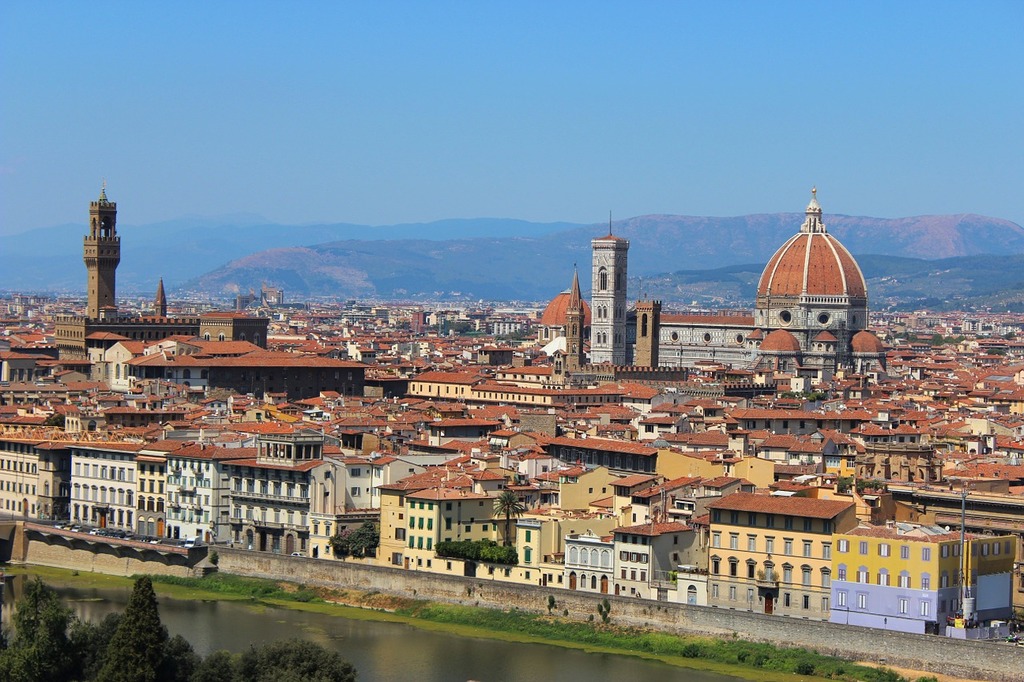
Florence was the first place I landed in Tuscany, and within hours, I was completely spellbound. There’s a reason it’s called the cradle of the Renaissance—every street feels like it’s holding a secret masterpiece. I started my day with a cappuccino in a tiny café near the Duomo, and I remember looking up and actually gasping. The red-tiled dome, the marble facade—photos do not do it justice.
I spent most of my time walking. That’s the thing about Florence—it’s best explored slowly. I wandered into the Uffizi Gallery and stood for almost ten minutes in front of Botticelli’s Birth of Venus. Then I crossed the Arno River over the Ponte Vecchio, a medieval bridge lined with shops that look like they haven’t changed in centuries. I even found a small antique bookstore tucked into a side alley—it felt like a movie scene.
What I loved most was how Florence blends grandeur and intimacy. One moment, you’re standing in front of the colossal Cathedral of Santa Maria del Fiore, and the next, you’re sipping wine in a quiet courtyard. The sunset from Piazzale Michelangelo was pure magic—I could see the whole city bathed in amber light, with the Duomo standing proud in the skyline.
- Must-visit museums: Uffizi Gallery, Accademia (hello, Michelangelo’s David)
- Best time to go: early morning or late evening to avoid the crowds
- Favorite moment: journaling on the steps near the Arno as a street musician played soft jazz
2. Siena
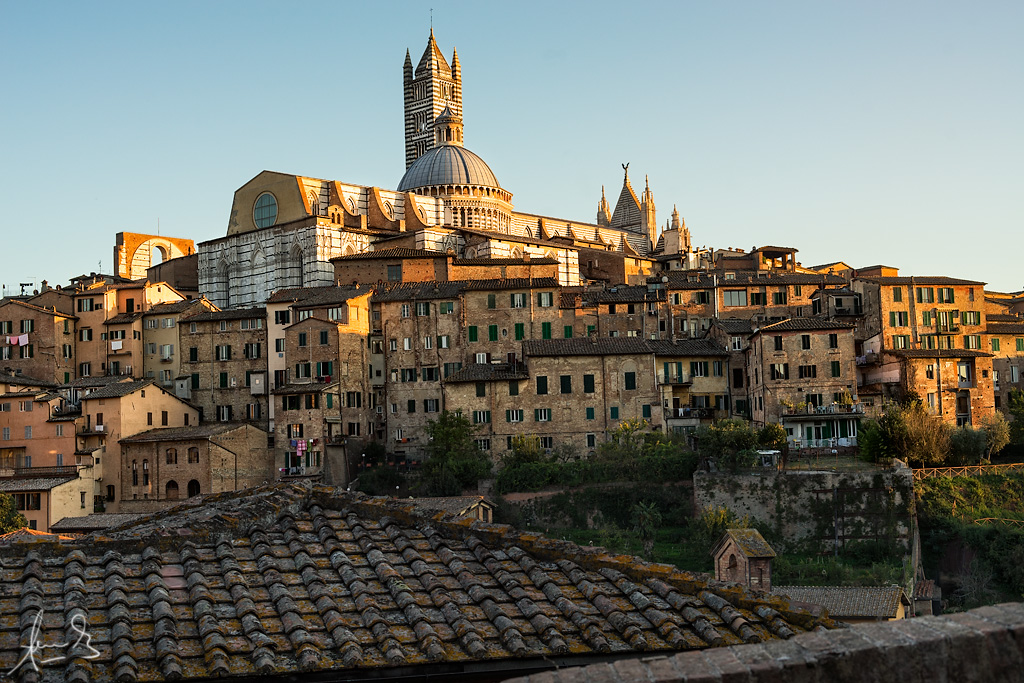
Siena felt like stepping into another century. I arrived just as the sun dipped low, casting a golden hue across the red-brick buildings. The first thing I noticed was how different it felt from Florence—quieter, more medieval, like the city had intentionally preserved its soul. The streets spiral inward toward the heart of Siena: Piazza del Campo, a shell-shaped square that immediately became one of my favorite spots in Tuscany.
I sat at a café on the edge of the piazza with an espresso and just watched life happen. Locals were chatting on the steps, kids were kicking a soccer ball, and there was a sense of ease in the air. I learned that this square is home to the famous Palio di Siena, a bareback horse race that’s been held here since the 1600s. Even though I didn’t catch the race, I could feel the energy of it echoing in the bricks.
What really stole my heart was Siena Cathedral (Duomo di Siena). It’s bold, striped in black and white marble, and filled with intricate details—every inch of it seemed to tell a story. Inside, the floor was inlaid with elaborate mosaic scenes, and I couldn’t stop staring up at the frescoed ceilings. I also climbed the panoramic terrace next to the Duomo for a view of the entire city—it was the kind of view that makes you pause and just breathe.
- Cultural gem: Siena’s medieval architecture is incredibly well preserved
- Underrated spot: The crypt under the Duomo—almost no tourists and mind-blowing frescoes
- Tip: Visit early in the day or right before sunset for the most peaceful experience
3. Pisa
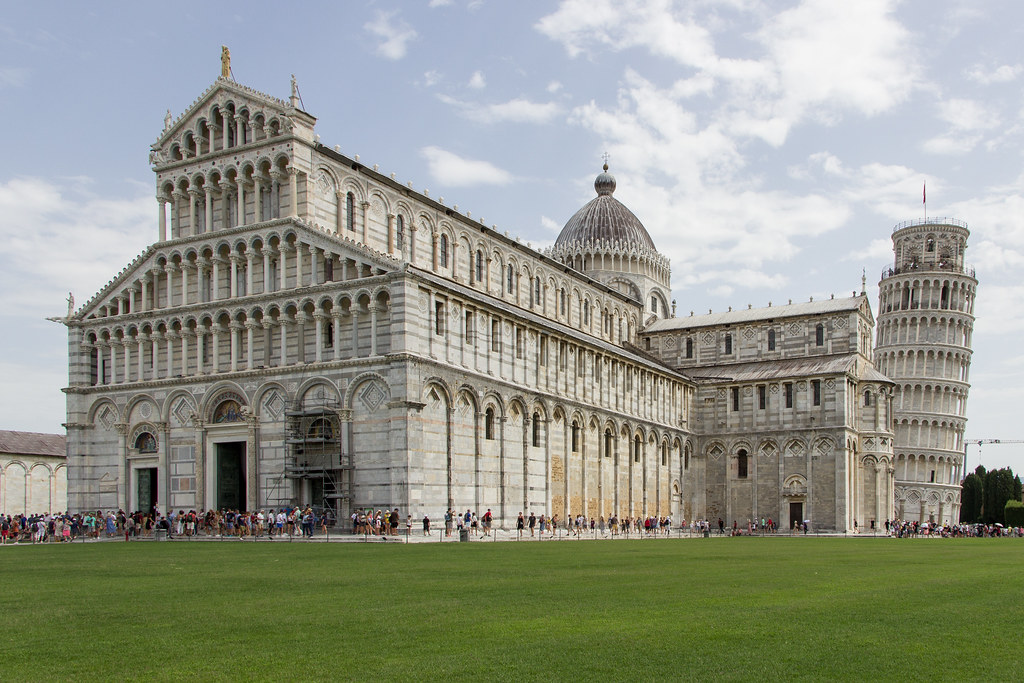
Okay, I’ll admit it—I went to Pisa for that tower. But what surprised me was how much more the city had to offer beyond the famous lean. Yes, seeing the Leaning Tower of Pisa in person was surreal, and yes, I did the cheesy photo pose (don’t judge me). But once I ticked that off the list, I let myself explore, and that’s where Pisa really started to shine.
The tower is part of the Piazza dei Miracoli, and it’s not just the tower that’s worth your time—the cathedral, the baptistery, and the Camposanto Monumentale are all works of art. I climbed the tower, and the view from the top was actually one of the best I had in Tuscany. The tilt makes the steps feel weird under your feet, but it’s all part of the charm.
Once I got away from the tourist crowd, I found myself strolling along the Arno River, where colorful buildings lined the banks and locals sipped coffee at outdoor tables. I had lunch at a tiny trattoria with no English menu (always a good sign), and the seafood risotto was unforgettable. The city had a student vibe, too, thanks to the university, which gave it more energy than I expected.
- Best photo spot: Right behind the tower at golden hour for fewer crowds
- Hidden gem: Keith Haring’s giant mural Tuttomondo near the train station
- Fun fact: The baptistery has acoustics so good, they demonstrate the echo effect daily
4. Arezzo

Arezzo is one of those places that makes you feel like you’ve found a secret. It doesn’t get the tourist traffic of Florence or Siena, but that’s exactly why I loved it so much. It’s peaceful, authentic, and rich in history—without the long lines or overpriced menus.
I arrived on a Saturday morning and was lucky enough to stumble into the Arezzo Antiques Fair, which happens the first weekend of every month. The entire historic center turns into an open-air market, filled with vintage treasures, handmade crafts, and old books that smell like history. I could’ve spent hours there (and did).
But the real reason I came was to see Piero della Francesca’s frescoes inside the Basilica of San Francesco. They’re a masterpiece of Renaissance art, and I sat there in complete silence, just absorbing the details. You don’t need to be an art historian to feel the weight of it—it’s like the walls are whispering stories from the past.
I also climbed to the Medici Fortress at the top of the city for panoramic views that stretched all the way to the Apennines. I packed a simple lunch from the market (fresh focaccia, cheese, and local figs) and ate it on a park bench overlooking the rooftops. Pure peace.
- Best experience: Antique fair and open-air art scene
- Quiet corner: Piazza Grande during the early morning—blissfully empty
- Local dish to try: Pappardelle with wild boar ragù (it’s legendary here)
5. Volterra
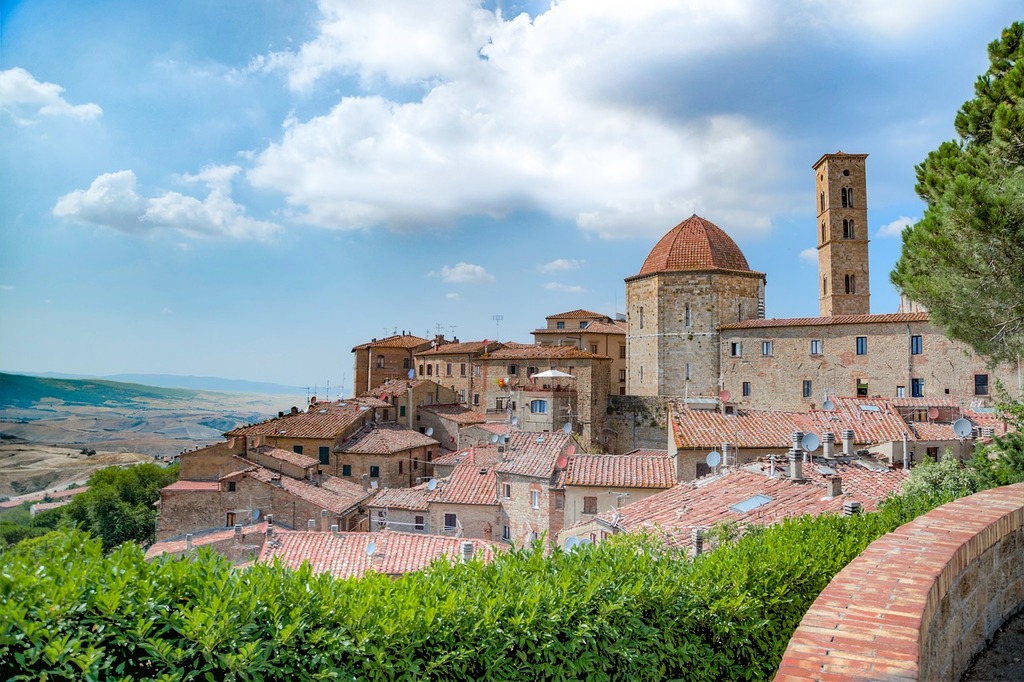
Volterra had this magnetic pull from the moment I saw it perched high on a hilltop. The drive up was full of winding roads and scenic switchbacks, and when I finally reached the town, it felt like stepping into a beautifully aged film set. The ancient stone walls, narrow alleys, and soft golden light gave the whole place a mystical feel.
This town is famous for its Etruscan roots, and the Guarnacci Etruscan Museum blew me away with its ancient artifacts. I’m not usually a museum person, but seeing pieces that were thousands of years old made me pause and appreciate how much life this land has seen. I also visited the Roman Theater, which still hosts performances—imagine watching a play surrounded by ruins!
But the best part? Volterra was calm. Like, really calm. I wandered aimlessly, had the creamiest gelato from a shop tucked into an archway, and bought a small alabaster sculpture (the local specialty) from a fifth-generation artisan who carved it while I watched. We didn’t even speak the same language, but the smile he gave me when I paid said everything.
- Best moment: Watching sunset from the city wall—no crowd, just wind and light
- Something different: Alabaster workshops where you can watch artists work
- Vibe: Timeless, poetic, and a little mysterious
Perfect For: Wine, Countryside & Romantic Drives
If you’re dreaming of winding roads, vineyard views, and long lunches that stretch into golden hours, these Tuscan gems are made for you. I explored them at my own pace, with the windows down, my favorite playlist on, and a heart that felt lighter with every curve in the road.
6. Val d’Orcia
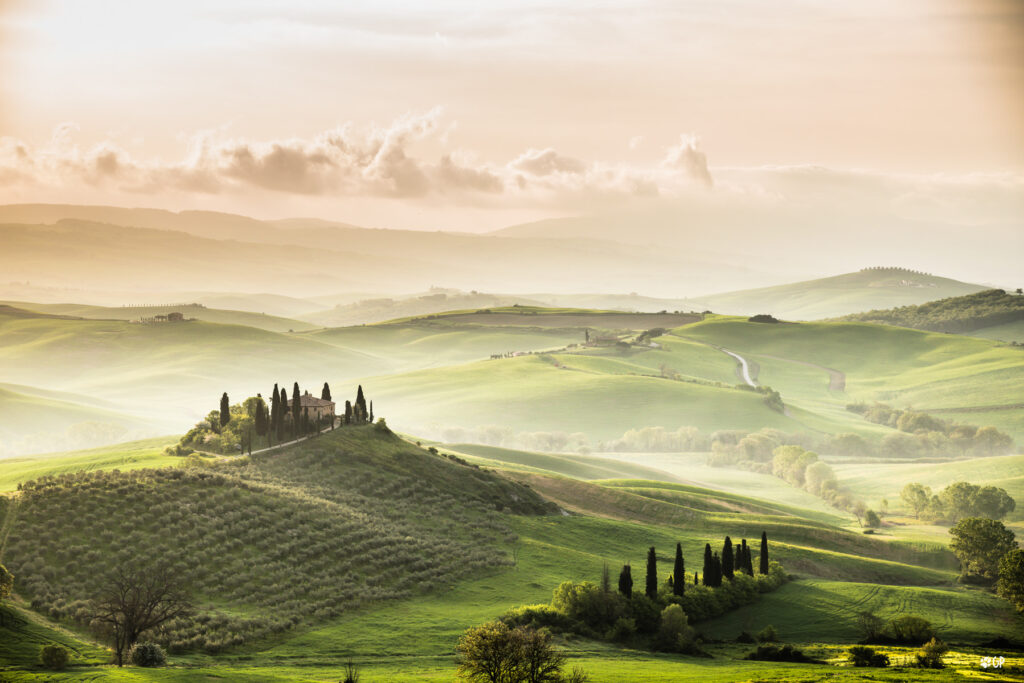
If there’s one place that completely redefined beauty for me, it was Val d’Orcia. The moment I arrived, I felt like I had stepped into a living oil painting. Rolling hills stretched endlessly in every direction, lined with tall cypress trees and dotted with stone farmhouses. The colors were surreal—greens that glowed, fields dusted with gold, and skies so wide they looked like they belonged in a dream.
Driving through Val d’Orcia was my favorite part. I stopped constantly—sometimes just to breathe in the scent of wild herbs or to snap a photo that still didn’t do the view justice. I visited Pienza, Montalcino, and Montepulciano, each town offering its own charm, and more importantly, its own incredible wine.
In Pienza, I wandered quiet streets and picked up a wedge of pecorino that I nibbled on during my walk. In Montalcino, I toured a small vineyard and tasted Brunello straight from the barrel—deep, velvety, and absolutely unforgettable. Montepulciano’s underground wine cellars made me feel like I was in a Tuscan version of Narnia.
What made Val d’Orcia special wasn’t just how stunning it looked—it was how calm it felt. Time slowed down here. I journaled under an olive tree. I picnicked beside a vineyard. I even forgot to check my phone for hours.
- Favorite route: The drive from San Quirico d’Orcia to Pienza—pure magic
- Wine to try: Brunello di Montalcino or Vino Nobile di Montepulciano
- Moment I’ll never forget: A sunset view with church bells ringing in the distance
7. Chianti Region
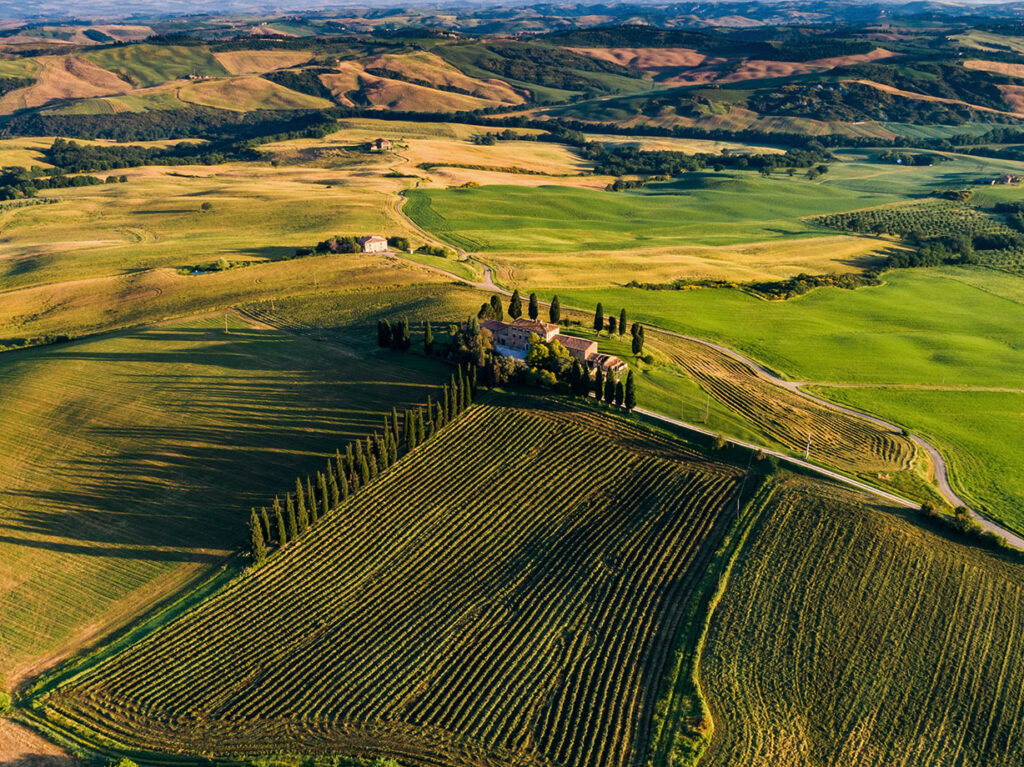
The Chianti region is where my love affair with Tuscan wine officially began. I spent a few days driving through this heartland between Florence and Siena, and every bend in the road seemed to lead to another postcard-worthy view. Vineyards sprawled out in perfect rows, farmhouses peeked from hilltops, and the smell of fresh grapes hung in the air.
I stopped at Greve in Chianti, a cozy town that felt like a wine village built for dreamers. The town square had local vendors selling cheeses, wines, and handmade goods. I had lunch at a small trattoria and ordered a tagliatelle al tartufo with a glass of Chianti Classico—life-changing.
Next was Radda in Chianti, quieter and more romantic. I stayed at a rustic agriturismo with no Wi-Fi and no TV, just the sound of birds and the clink of wine glasses. Every evening, the owners served a four-course meal with wine from their own vineyard. I’m convinced the air in Chianti makes everything taste better.
What I loved most about the Chianti region was the connection to the land. I met winemakers who had been tending vines for generations. They didn’t just pour wine—they told stories with it. I tasted passion, patience, and pride in every glass.
- Road trip tip: Take the SR222 (Chiantigiana Road)—it’s scenic perfection
- Favorite wine moment: A sunset tasting in an open-air courtyard in Castellina
- Chianti Classico must-have: Look for the black rooster seal on the bottle
Also Useful: Best Places to Visit in Europe
8. Montepulciano
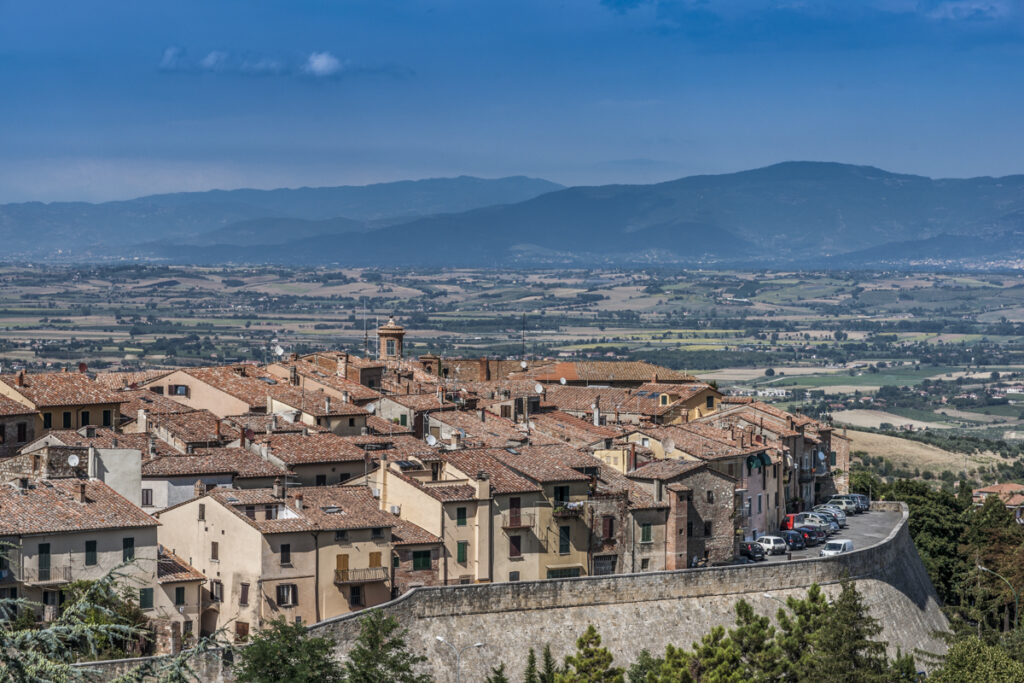
Montepulciano is the kind of town that feels straight out of a Renaissance fairy tale. I remember climbing the steep stone streets and being rewarded with sweeping views of vineyards and distant hills. It was peaceful, romantic, and full of old-world charm.
The real star here, though, is the wine. Vino Nobile di Montepulciano is one of the region’s finest, and I tried it in a cellar that dated back centuries. The cellar itself felt like a maze under the town—cool, quiet, and filled with the scent of aged oak. I could almost hear the echoes of the past in those stone walls.
After the tasting, I wandered through the main square, Piazza Grande, where musicians played soft tunes and the sunset cast a warm glow on the Renaissance architecture. Dinner was on a rooftop terrace where I ate handmade pici pasta with ragù and sipped wine as the stars began to appear.
- Best cellar: Contucci or De’ Ricci—authentic, atmospheric, and welcoming
- Don’t miss: The view from the tower of the Palazzo Comunale
- Romantic moment: Sharing dessert while a violinist played in the square
9. Montalcino
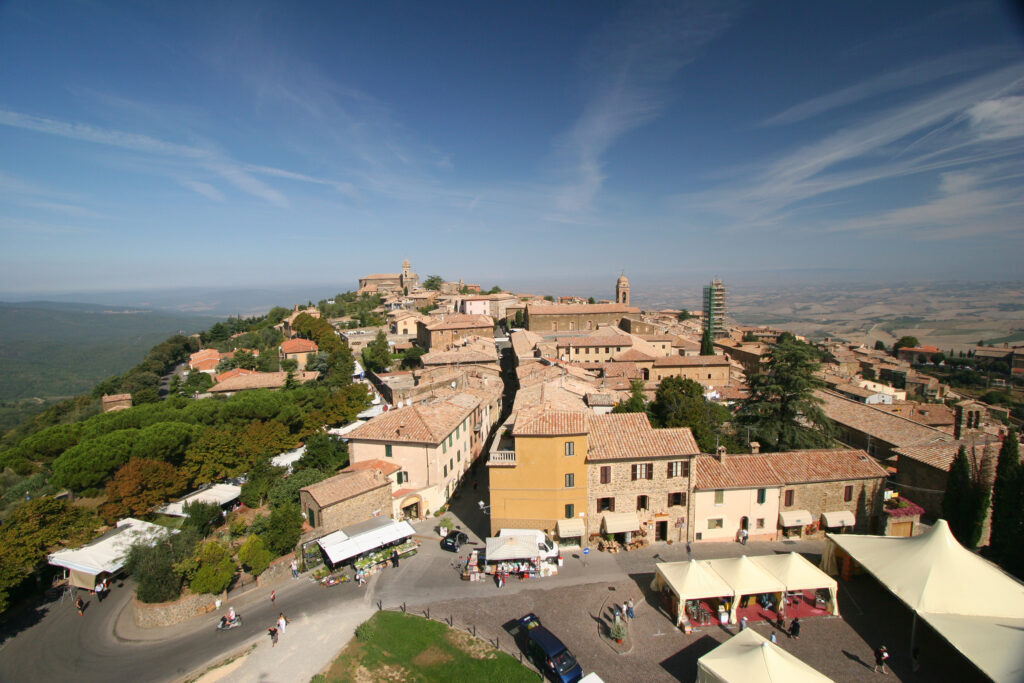
If Montepulciano was charming, Montalcino was elegant. This hilltop town is famous for Brunello di Montalcino, one of the most prestigious wines in Italy. I arrived mid-morning, and the air already smelled of grapes and earth—it was harvest season.
I visited a small family-run vineyard where the owner personally led me through the vines. He explained how Brunello grapes are aged for years before release, and when I finally tasted it, I understood the hype. It was bold, full-bodied, and rich with complexity. Paired with a slice of local pecorino, it was perfection.
The town itself is compact and classy. I explored the fortress (Rocca), which has panoramic views that took my breath away. I sat on a stone bench for over an hour just soaking it all in. Every time I thought I’d leave, I found another little alley or café that made me stay a bit longer.
- Wine tip: Brunello is best aged—try vintages over 10 years if possible
- Fortress tip: Climb the tower for views of the entire Val d’Orcia
- Ideal moment: Slow lunch with wine, cheese, and no rush to leave
Perfect For: Relaxation, Hidden Gems & Wellness Escapes
Not every travel day needs to be packed with museums and sightseeing. Sometimes, the best memories come from slow mornings, healing waters, and discovering peaceful places far from tourist crowds. These Tuscan spots gave me space to exhale—and they might just do the same for you.
10. Elba Island

I didn’t expect Tuscany to have an island like Elba—and I definitely didn’t expect to fall in love with it the way I did. After a short ferry ride from Piombino, I found myself in a completely different kind of Tuscan experience: beaches with crystal-clear water, hiking trails that smelled like pine, and seafood so fresh it felt like the ocean was still on the plate.
I based myself in Porto Azzurro, a charming harbor town with pastel-colored buildings and cobbled streets. My days started with breakfast by the marina and ended with sunset swims. One of my favorite spots was Fetovaia Beach—small, tucked between rocky cliffs, and the kind of place where I lost all sense of time.
Elba also surprised me with its history. I visited Napoleon’s old residence (he was exiled here), and the views from the gardens were breathtaking. I hiked up Monte Capanne, the island’s highest point, and from the top, I could see the entire coastline and even Corsica in the distance.
- Best beach: Fetovaia for relaxation, Sansone for snorkeling
- Off-the-beaten-path: The inland village of Marciana Alta—quiet and full of charm
- Soul moment: Floating in the sea with nothing but the sound of waves
11. Bagno Vignoni
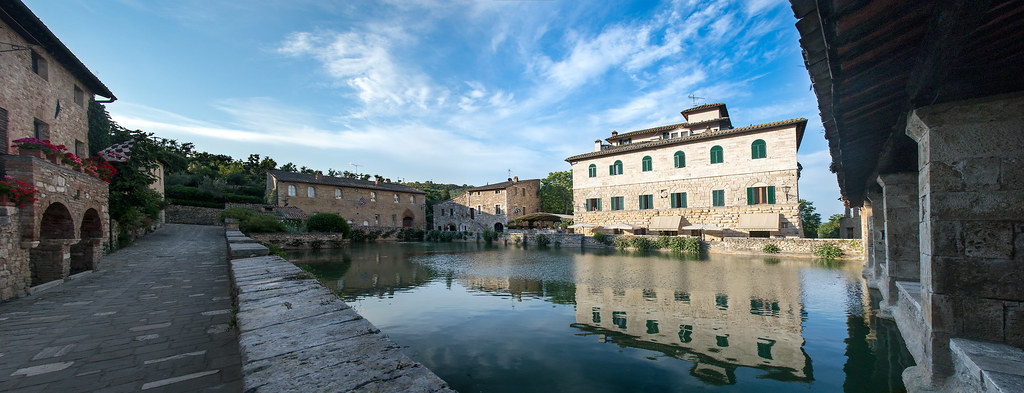
Bagno Vignoni is unlike anywhere I’ve ever been. Picture a tiny Tuscan village with a natural thermal pool right in the center of the main square—yes, really. The large stone basin was once used by the Romans, and even today, steam rises from the warm waters like something out of a fantasy novel.
I stayed at a spa hotel right next to the square, and every part of the experience felt healing. The thermal waters were rich in minerals, naturally warm, and completely soothing. I floated for hours, surrounded by cypress trees and hills that looked like painted backdrops. At night, the entire village glowed under soft lights, and the steam made everything feel mysterious and magical.
There isn’t much “to do” in Bagno Vignoni—and that’s the beauty of it. I took long walks, read by the pool, and chatted with locals over dinner. The food here is traditional, hearty, and made with so much care. I had one of the best ribollita (Tuscan soup) dishes of my life here.
- Must-do: Book a spa treatment or soak in the free public springs just below the village
- Peaceful activity: Sunrise walk along the hiking paths overlooking the valley
- Ideal for: Unplugging, recharging, and reconnecting with yourself
12. Lucca
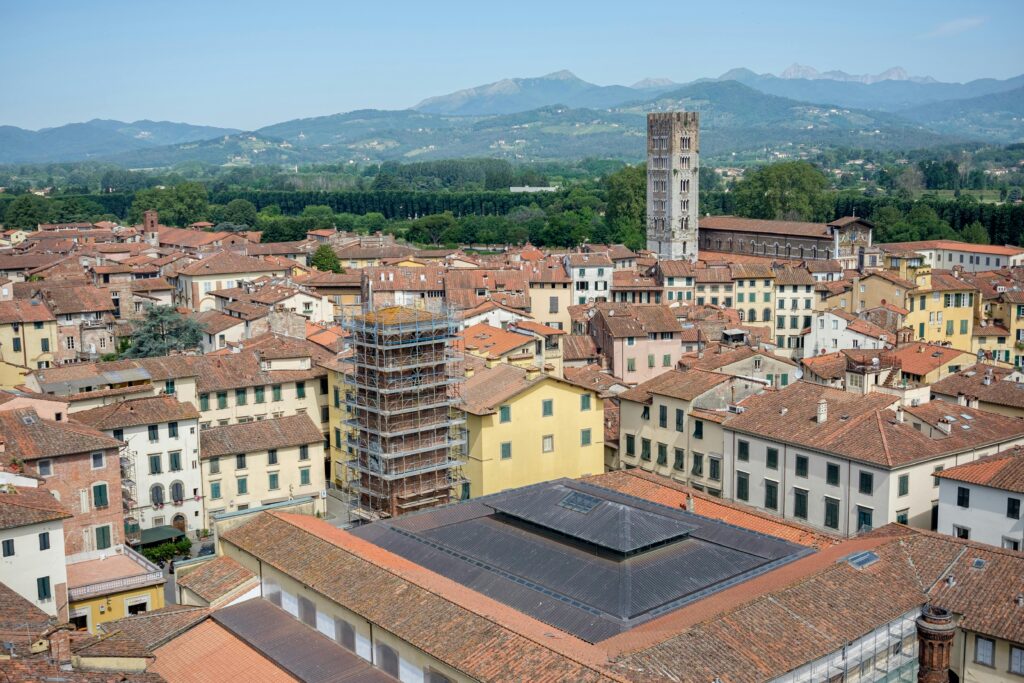
Lucca has a quiet grace that sneaks up on you. I didn’t feel the need to rush here—it’s not a place filled with headline sights. Instead, Lucca invites you to slow down. I rented a bike on my first morning and cycled the entire loop around the Renaissance-era city walls. It’s flat, green, and shaded by trees, with glimpses of gardens, rooftops, and church towers peeking out along the way.
Inside the city, Lucca is a maze of narrow lanes, elegant piazzas, and hidden courtyards. I loved how walkable it was—no cars in the historic center meant I could just wander without worrying about traffic. I found local bakeries selling warm focaccia, small boutiques with handmade crafts, and cafés that encouraged lingering.
The standout moment? Climbing Guinigi Tower, which has actual trees growing on top of it. From there, I had a 360° view of the city and the hills beyond. I also visited a small classical concert one evening at a tucked-away church—it felt like being part of something intimate and beautiful.
- Best experience: Biking the walls at sunset
- Local tip: Try Buccellato, a sweet bread with raisins and anise
- Why I’d go back: For a stress-free base to relax and live like a local
13. Cortona
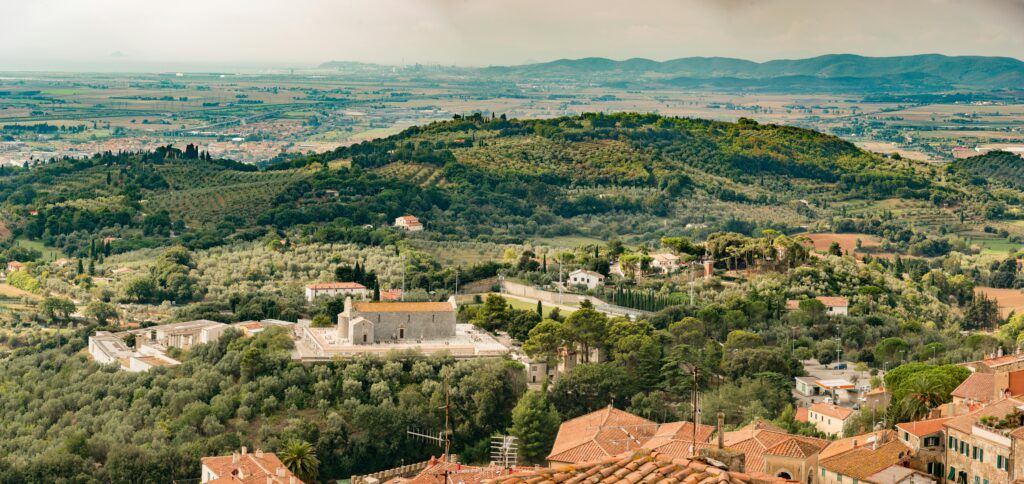
Cortona was pure poetry. Nestled on a hill in southeastern Tuscany, it’s best known from the book Under the Tuscan Sun—but it’s not just a backdrop for romantic fiction, it’s a place that captures your heart in quiet, tender ways. I arrived by bus and walked up the steep slope toward the town, the scent of jasmine and fresh bread welcoming me.
The first thing that struck me was the view. Cortona overlooks the Val di Chiana, and the light here is like nowhere else. I sat on a stone ledge and watched the landscape stretch out for miles, layered with olive groves and vineyards.
The town itself is intimate, filled with warm-colored buildings, terracotta rooftops, and locals who actually live here—not just work in tourism. I loved wandering without an agenda. I visited the Museo Diocesano, which houses beautiful Renaissance works, but I spent just as much time in wine bars and tiny shops chatting with the owners.
One morning, I hiked up to the Basilica of Santa Margherita, passing wildflowers and old stone walls along the way. The silence up there was deep and comforting. I stayed long after the bells stopped ringing.
- Hidden gem: The Church of San Francesco—quiet, spiritual, and peaceful
- Favorite food: Handmade pici with truffle oil and pecorino
- Why it mattered: Cortona reminded me to slow down and savor the small joys
14. San Gimignano
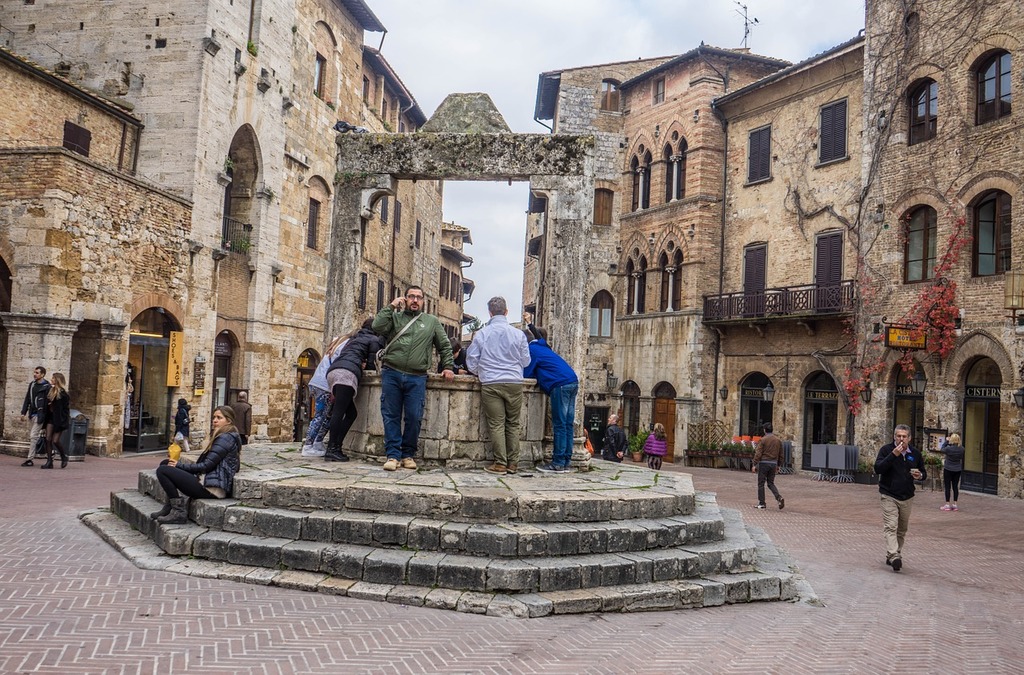
San Gimignano is Tuscany’s “Medieval Manhattan,” and it completely took me by surprise. I thought it might feel overly touristy, but once I stepped through the ancient gates, I felt the magic. The skyline of stone towers against the rolling hills is dramatic in the best way.
I spent the morning walking up and down cobblestone streets lined with artisan shops, gelaterias, and little cafés. I found a ceramic studio where I bought a hand-painted espresso cup (still one of my favorite souvenirs). I also visited Torre Grossa, the tallest tower, and climbed it for one of the best panoramic views I’ve ever had.
But the moment that sealed my love for San Gimignano? Sitting on the steps in the main square, eating gelato from Gelateria Dondoli, which has won multiple world championships. I had the saffron and pine nut flavor—unusual, rich, and unforgettable.
- Best view: From the top of Torre Grossa—don’t skip it
- Local specialty: Saffron and Vernaccia white wine
- Why it’s worth it: Despite the crowds, it still feels deeply authentic
15. Pienza
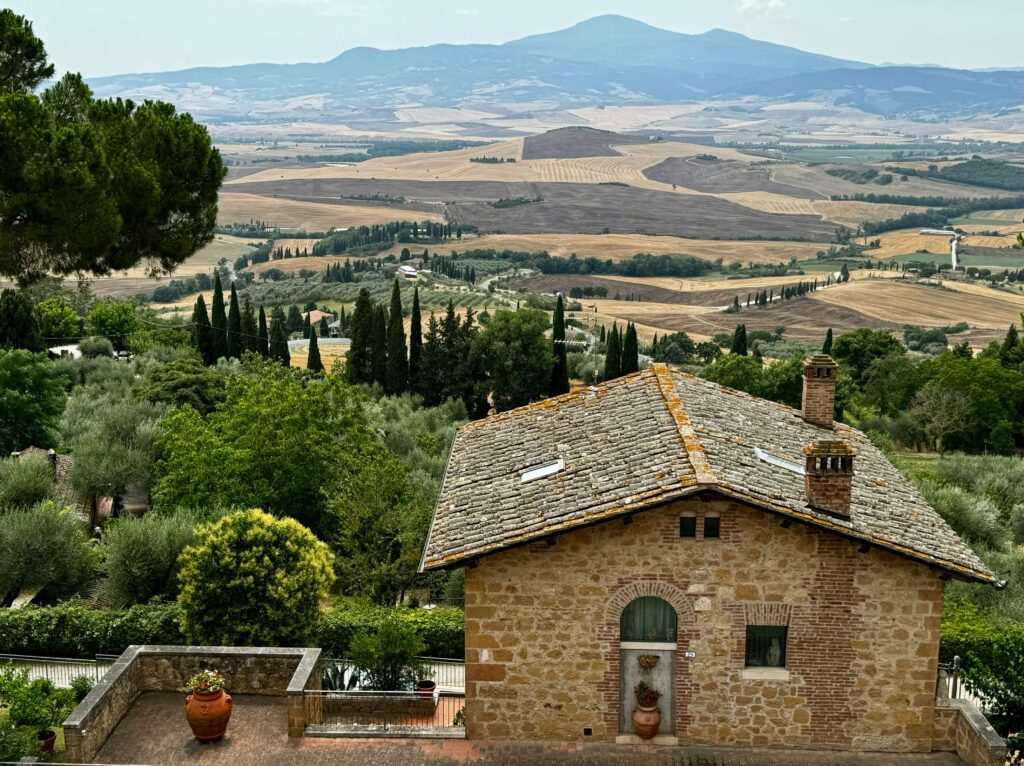
Last but definitely not least, Pienza was small but full of soul. I arrived late in the day and felt instantly at home. The streets were lined with flower boxes, and the air was thick with the scent of pecorino cheese, which Pienza is famous for.
I wandered through its romantic lanes—yes, there’s actually a Via dell’Amore (Street of Love)—and ended up at the town wall, where the view over the Val d’Orcia took my breath away. It was quiet, and the soft sound of wind rustling through the fields made the moment feel sacred.
I had dinner at a little osteria tucked behind the cathedral, where I ordered pasta with pear and pecorino and watched the golden light fade into twilight. It wasn’t flashy or grand—it was honest, heartfelt, and beautifully Tuscan.
- Best bite: Anything with pecorino—especially paired with local honey
- View to remember: From the wall behind the Duomo
- My takeaway: Pienza proves small places can leave the biggest impact
FAQs
1. What is the best time to visit Tuscany for scenic drives and wine tasting?
The best time to visit Tuscany for road trips and vineyard experiences is from late April to early June or September to mid-October. These months offer warm weather, fewer crowds, and stunning countryside views. Harvest season (vendemmia) in September is especially magical, with wine festivals and grape-picking activities in places like Chianti, Montepulciano, and Montalcino.
2. How many days do you need to explore Tuscany properly in 2025?
To truly enjoy the best places to visit in Tuscany, I recommend spending at least 7–10 days. This allows enough time to explore top cities like Florence and Siena, plus take scenic drives through Val d’Orcia, visit wine towns, and unwind in hidden gems like Bagno Vignoni or Lucca without feeling rushed.
3. Is renting a car in Tuscany necessary for visiting hill towns and countryside?
Yes, renting a car in Tuscany is highly recommended if you want to explore beyond the cities. Many of the most beautiful spots—like Pienza, Volterra, or Val d’Orcia—aren’t easily accessible by train. A car gives you the freedom to take scenic backroads, stop at vineyards, and visit smaller villages at your own pace.
4. What are some lesser-known but amazing places to visit in Tuscany?
While cities like Florence and Pisa are famous, don’t skip hidden gems like Cortona, Elba Island, or Arezzo. These towns offer authentic local charm, fewer tourists, and often more affordable experiences. They’re perfect for travelers looking to escape the crowds and discover the soul of Tuscany in 2025.
5. Are Tuscany’s thermal baths worth visiting, and which are the best ones?
Absolutely. Tuscany’s thermal baths are a must-do for relaxation and wellness travel. One of my favorite spots was Bagno Vignoni, a tiny village with a hot spring right in the main square. Others worth visiting include Saturnia Hot Springs and Rapolano Terme. Most are open year-round, and visiting in cooler months makes the warm water even more therapeutic.
Conclusion
Tuscany has a way of staying with you. It’s not just the postcard views or the perfect glass of wine—it’s the feeling you carry long after you leave. Every place I visited, from the bustling piazzas of Florence to the peaceful hot springs in Bagno Vignoni, added something unexpected to my journey. It was the conversations with locals, the quiet moments watching sunsets over rolling hills, and the joy of getting lost on scenic backroads that made this trip unforgettable.
Whether you’re chasing art, food, nature, or just a deeper kind of stillness, Tuscany has space for all of it. It invites you to slow down, breathe deeply, and savor everything—one espresso, one vineyard, one golden afternoon at a time.
If Tuscany’s been sitting on your bucket list, let this be the year you finally make the trip. Trust me, once you’re there, you’ll wonder what took you so long.

